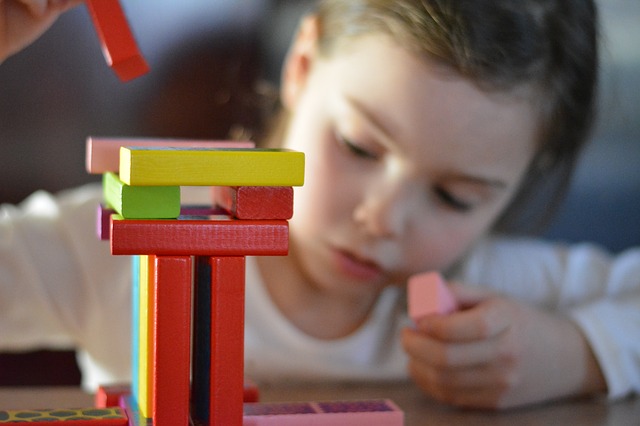Children can, and should, learn math from a very early age. Developmental psychologist Herbert Ginsburg from the Teachers College at Columbia asserts that young students really enjoy learning math, especially when they are given the opportunity to manipulate objects, physically or digitally, in a fun and exciting way. Concrete math taps into that characteristic of the young learner to effectively lay the foundation for mathematical literacy.
 Image by Design_Miss_C from Pixabay.
Image by Design_Miss_C from Pixabay.
Concrete math is a foundational practice that lays the groundwork for later abstract problem solving. Used extensively in preschool and early grades, it starts with what young learners already understand and builds upon it. It gives teachers and parents a way to introduce abstract ideas, such as adding or dividing, in a tangible way. This stage of learning is the “doing” phase, where young children sort, count, divide, add, or subtract using physical objects rather than symbolic representations.
Children may initially use objects that are real, such as pieces of fruit, before moving on to math manipulatives, such as counting cubes, that are meant to represent apples, oranges, and bananas. It is most useful for children to have access to a variety of objects so that they can choose their own method and approach to problem solving in a variety of ways.
One of the reasons concrete math and the use of physical objects is so effective is due to the mind-body connection. Using our bodies while learning helps us better remember what we learn and transfer that knowledge more readily. This phenomenon is called embodied cognition.
The math curricula used today in early grade mathematics is conceptual in nature. Conceptual math focuses on giving kids a foundational understanding of problem solving rather than teaching students processes to approach a particular problem. Conceptual learning aims to increase literacy in mathematicsrather than teach steps to find solutions. This fosters deep understanding that students can transfer to higher level math work as well as other subject areas, such as science and engineering.
Part of the aim of conceptual learning is to aid students in moving along the continuum of concrete to abstract learning. CPA, or Concrete, Pictorial, Abstract, is an approach developed by American psychologist Jerome Bruner and is an integral component of the widely adopted curriculum Singapore Math. His research showed that children are most successful in math when they are instructed first with concrete materials, then pictorial representations, and finally with abstract problems that use symbols.
Many national groups have researched the efficacy and importance of using conceptual math in the classroom. The research concludes that the study of mathematics should emphasize higher order thinking skills, deep understanding of concepts, mathematical communication, making connections, and applying mathematics to other areas of learning. This level of understanding in young learners begins with concrete math.
When children are engaged in concrete math, they can use physical, virtual, or a combination of the two types of objects and math manipulatives. Physical objects can include real things like toy cars, plastic dinosaurs, pieces of candy, or balls.
A vast array of math manipulatives are available for use at home and are well stocked in preschool and early grade classrooms using research-based math curriculum. Examples include cubes, coins, blocks, rods, base ten blocks, geometric shapes, tiles, dominoes, dice, and many more.
Many math apps and learning platforms use virtual simulations of physical objects for kids to use when problem solving. They look and behave just like their real-life counterparts but they offer a few advantages not found with physical manipulatives. When utilizing these digital objects to solve problems, learners are immersed in an engaging environment conducive to deep learning and they receive feedback immediately on their performance.
Students can also use both physical and digital manipulatives in tandem, as is the case with MathBRIX. The learner then has the opportunity to activate the body, harnessing the powerful mind-body connection, while simultaneously being immersed in an engaging virtual world.
Physical objects like toys and fruit can be used in a wide variety of applications. Children can compare groups of objects, such as a group of 2 bananas compared to a group of 3 oranges. At first, the learner could just choose which is bigger/smaller or more/less. As the child gains understanding and has ample practice, the “greater than” and “less than” vocabulary and symbol can be introduced.
Children can work on numbers by matching a group of items with the matching numeral, for example matching the number 5 with a group of 5 toy cars. Addition, subtraction, division, and even multiplication can all be represented with physical objects to lay a foundation of mathematical fluency and comprehension.
Digitally, children can practice problem solving skills as we see in this sample MathBRIX game that asks children to match the number with the correct brick. Virtually every early math skill can be practiced and explored with virtual concrete math games.
Approaching problem solving in a concrete way is a necessary first step in a learner’s journey to mathematical literacy. Utilizing real objects, math manipulatives, and digital versions of both help form a solid foundation from which a child’s mathematical understanding can grow.